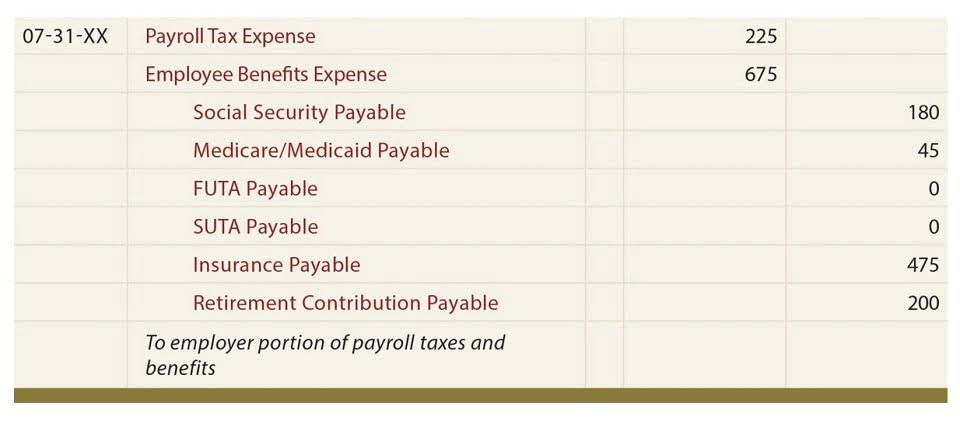
By familiarizing yourself with the tax brackets, utilizing tools like the tax calculator, and staying informed about tax law changes, you can manage your state taxes more effectively. As part of its comprehensive tax reform, effective January 1, 2025, Iowa consolidated its three tax brackets into a single Mental Health Billing bracket with a rate of 3.8 percent, joining the group of states with flat individual income taxes. Federal adjusted gross income undergoes New York modifications, resulting in New York adjusted gross income. The New York adjusted gross income branches off into standard deduction and itemed deductions. This leads to New York taxable income, which undergoes a tax table computation.

When should residents file?
Single is the filing type used by all individual taxpayers who are not legally married, and who have no dependants for whom they are monetarily responsible. Every state with an income tax as well as the IRS support the Single filing status. We estimate the OBBBA will reduce federal taxes on average for individual taxpayers in every state. Across all individual tax filers throughout the US, the average tax cut per taxpayer will be over $3,700 in 2026. The NYC earned income credit is equal to 5% of your allowable federal earned income tax credit.
- This is because NYC calculates your income based on your net New York State taxable income after you claim any applicable state income-tax deductions.
- To understand how tax brackets work for the better, think of them individually rather than seeing them as something like one that will take a certain portion of your income.
- The 2025 tax rates and thresholds for both the New York State Tax Tables and Federal Tax Tables are comprehensively integrated into the New York Tax Calculator for 2025.
- If you are considering using a mortgage to purchase or refinance a property in New York, our New York mortgage guide can provide useful information about rates and getting a mortgage in the state.
- Forty-one taxA tax is a mandatory payment or charge collected by local, state, and national governments from individuals or businesses to cover the costs of general government services, goods, and activities.
Excise taxes
In addition, understanding these changes can open up new opportunities for tax savings or alter the way you file your taxes. By keeping abreast of the latest developments, you can ensure compliance and optimize your tax situation. Stay informed about any changes to New York State tax laws that might affect your finances. Signing up for updates from the New York State Department of Taxation and Finance is a good way to keep track of these changes. This not only helps manage cash flow but also provides peace of mind, knowing that you are on track with your tax obligations. This proactive approach ensures that you are not caught off guard by a large tax bill at the end of the year.
What is the standard deduction in New York?

For tax years beginning on or after January 1, 2026, eligibility restrictions for rehabilitation of historic properties tax credit does not apply to certain affordable housing projects. Further, an eligible taxpayer is permitted to transfer the rehabilitation of historic properties tax credit (in whole or part) to another taxpayer or entity. Bankrate.com is an independent, advertising-supported publisher and comparison service. We are compensated in exchange for placement of sponsored products and services, or by you clicking on certain links posted on our site. Therefore, this compensation may impact how, where and in what order products appear within listing categories, except where prohibited by law for our mortgage, home equity and other home lending products.
754, enacted in May 2023, reduced the top individual income tax rate from 5.84 percent in 2024 to 5.20 percent in 2025 and outlined the gradual reduction of the state’s top rate to 3.99 percent by 2027. 1001, enacted in May 2023, Indiana accelerated its previously enacted tax rate reductions, lowering the individual income tax rate from 3.05 in 2024 to 3.00 percent in 2025. The law also repealed previously enacted tax triggers, instead prescribing a rate reduction to 2.95 percent in 2026, and 2.9 percent in 2027 and beyond. 1015, enacted in April 2024, the flat individual income tax rate for 2024 decreased from 5.49 percent to 5.39 percent. Although the bill allowed for an accelerated schedule of future individual income tax rate reductions, the revenue conditions were not met for 2025, so the rate remains at 5.39 percent this year.

New York state has a progressive income tax system with rates ranging from 4% to 10.9% depending on a taxpayer’s income level and filing status. Living in New York City adds more of a strain on your paycheck than living in the rest of the state, as the Big Apple imposes its own local income tax on top of the state bookkeeping one. New York City’s income tax system is also progressive and rates range from 3.078% to 3.876%. Married filing joint, married filing separate, and head of household do differ in brackets.
STAR credit for new homeowners

Some states are conformed to out-of-date versions of the Internal Revenue Code (IRC), with California, which uses a 2015 (pre-TCJA) conformity date, as the most extreme case. Even absent conformity, some states chose to raise their own deductions and exemptions post-TCJA, which was particularly appropriate given the base-broadening nature of the federal law, some of which flowed through to state tax codes. New York has a graduated state individual income tax, with rates ranging from 4.00 percent to new york income tax 10.90 percent. New York has a graduated corporate income tax, with rates ranging from 6.5 percent to 7.25 percent. New York also has a 4.00 percent state sales tax rate and an average combined state and local sales tax rate of 8.53 percent.
Resident status rules
You can use the income tax estimator to the left to calculate your approximate New York and Federal income tax based on the most recent tax brackets. The Federal Income Tax, by contrast, has different tax brackets for Single, Married Filing Jointly, and Head of Household taxpayers. The New York adjusted gross income of a resident or nonresident individual is defined as federal adjusted gross income with modifications as specified by New York Tax Law, Article 22, § 612. You may have extra paperwork if you were living in New York City or Yonkers, since those cities assess local income tax on top of state tax. You may have extra paperwork if you live in New York City or Yonkers, because those cities assess local income tax on top of state tax. For high-earning New Yorkers with an adjusted gross income above $107,650, the computation of New York state taxes can be a little trickier than simply finding your taxable bracket and glancing at the “taxes owed” column.
Tax burdens in 2020, 2021, and 2022 are all higher than in any other year since 1978. For the year 2020, the detailed breakdown of New York payroll deductions can be found below, reflecting our commitment to both regulatory adherence and transparency. For taxable years on or after January 1, 2025, the definition of “independently owned” is amended by removing a subsidiary and other criteria in determining when a business is not controlled by another business entity. The law also amends the definition of “eligible business” in that each print media publication serving a separate market is treated as a separate media business.
While there is no inheritance tax in New York, estates are taxed at rates ranging from 3.06 percent to 16 percent after the current exemption of $7,160,000. If you need an extension to file your income tax, you must file an extension request online with the Department of Taxation and Finance. Generally, if you are required to file a Federal tax return New York will expect you to file a state return. If you do not have to file a Federal return, you don’t need to file a state return. Remember, while the process may seem complex, breaking it down into manageable steps can make it much more approachable. With careful planning and the right strategies, you can ensure that you’re prepared for tax filing season and make the most of your income.
